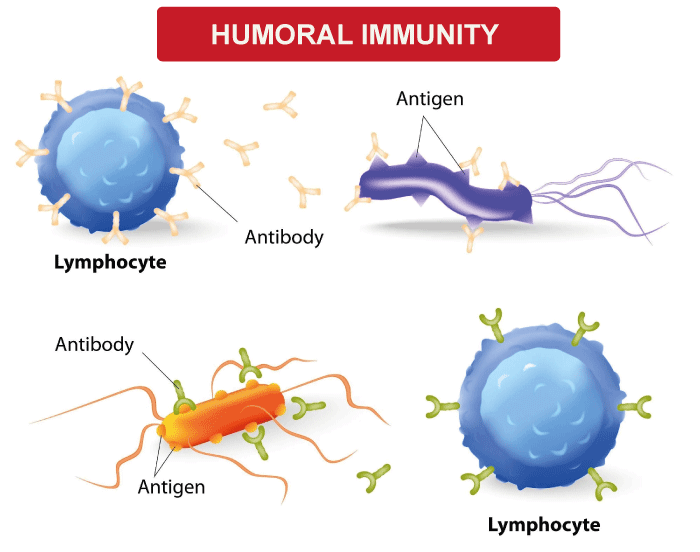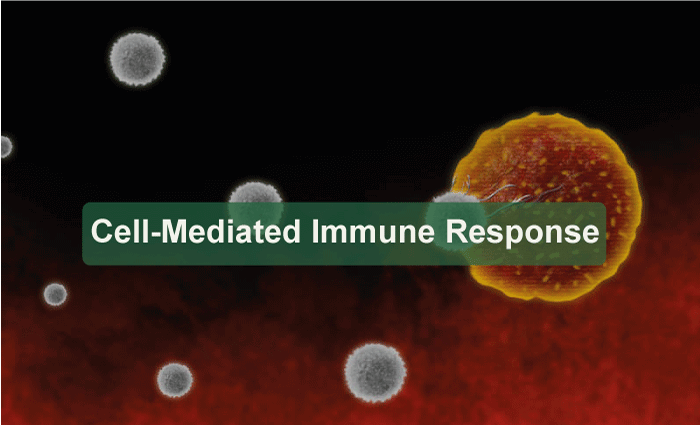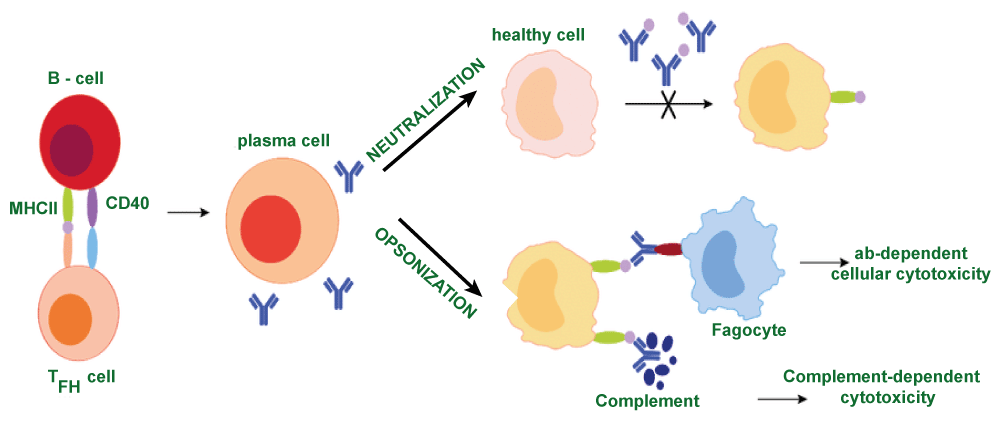Difference Between Humoral and Cell-Mediated ImmunityOne of the most remarkable systems of our body is the immune system. It devises strategies and employs different systems to fight off infections and protect the body from different harmful foreign agents entering the body. The immune system is divided into two main branches of immunity, which work in coordination to protect the body. These two systems are humoral and cell-mediated immunity.
Humoral ImmunityAntibody-mediated immunity or humoral immunity protects the body against infections caused by various pathogens like bacteria, viruses, and fungi, and hence it is an integral part of the immune system. The antibodies and immunoglobins that fight against the pathogens are present in the blood and other body fluids. 
The response of humoral immunity starts when any foreign agent or antigen enters the body. It is immediately recognized by specialized cells called B cells and B lymphocytes. The B cells of the immune system have a unique receptor present on its surface. The antigen entering the body is recognized as the receptor present on the surface of the B cell. It is followed by the activation of the immune system. B cells start dividing rapidly, giving rise to a large number of identical cells called clones. Some of these rapidly dividing B cells transforms into plasma cells. Plasma cells are specialized cells of the immune system that secrete large amounts of antibodies. Whenever the immune system encounters a foreign agent, it produces protein molecules in response to the specific antigen and binds to it with high specificity and affinity. Antibodies then neutralize the antigen by either coating them or aggregating the antigen. This way, the antigens become more accessible to the other cells of the immune system, like phagocytes and natural killer cells. Other dividing B cells differentiate into memory cells. Memory cells are able to recognize the same antigen if it enters the body again in the future. They stay in the body for a longer period of time as a part of the immune system to protect the body from future threats of the same pathogen. They provide a faster and more robust response than plasma cells in case where it re-encounters the same antigen again. The type of antibodies produced by B cells depends on the type of antigen it encounters or the situation of the body encountering the threat. Antibodies and immunoglobins are divided into five classes - IgM, IgG, IgA, IgD, and IgE. Whenever an infection occurs, the first antibody produced in response to that infection is IgM. It is usually a short-lived antibody. On the other hand, IgG is a comparatively more long-lasting antibody and is produced in more abundance. At the same time, IgA is present in higher concentrations in mucous membranes of respiratory and digestive tracts. It helps in fighting antigens and preventing infections at those sights. Although the role of IgD is unclear, some studies believe that it helps in B cell activation. IgE plays an important role in the case of allergic reactions and provides a defense against parasitic infections. In order to prevent the excessive production of antibodies or the case of self-reactivity, there are many mechanisms in the body to regulate humoral immunity responses. One of these mechanisms is "class switching." In this mechanism, the B cells have the ability to change the class of antibody they are producing by analyzing the type of antigen they are encountering. The second mechanism which regulates the humoral immune system is negative selection. Through this mechanism, the B cells that react strongly with self-antigen are eliminated and thus preventing autoimmune responses. Cell-Mediated ImmunityCellular immunity is also called cell-mediated immunity. It works in safeguarding the body against potential risks by protecting the body from cells that may bring harm to the body. In response to the antigens, cellular immunity produces various cells like T cells, Natural Killer cells (NK cells), and macrophages. 
In this type of immunity, the cells of the immune system target and eliminate infected or abnormal cells like cancerous cells or cells that are infected with a virus. A step-by-step account of how cellular immunity works -
Overall, cell-mediated immunity is a highly coordinated process that involves multiple immune cells and their interactions. This process allows the immune system to specifically target and eliminate infected or abnormal cells and is critical for defending the body against a wide range of diseases and conditions. 
ConclusionIn conclusion, there are two systems employed by the immune system to help fight foreign agents, known as the humoral immune system and the cell-mediated immune system. Both systems are interconnected and provide a defense. Both systems work together in synergy to give protection to the body against harmful disease-causing foreign invaders. Complex signaling processes, along with cell signaling, are involved in helping them coordinate their actions. The immune system is developed in such a way that it can switch its mode of immunity according to the situation to combat infectious agents and maintain the overall health of the person. Difference Between Humoral or Cell-Mediated Immunity
Next TopicDifference Between
|
 For Videos Join Our Youtube Channel: Join Now
For Videos Join Our Youtube Channel: Join Now
Feedback
- Send your Feedback to [email protected]
Help Others, Please Share










